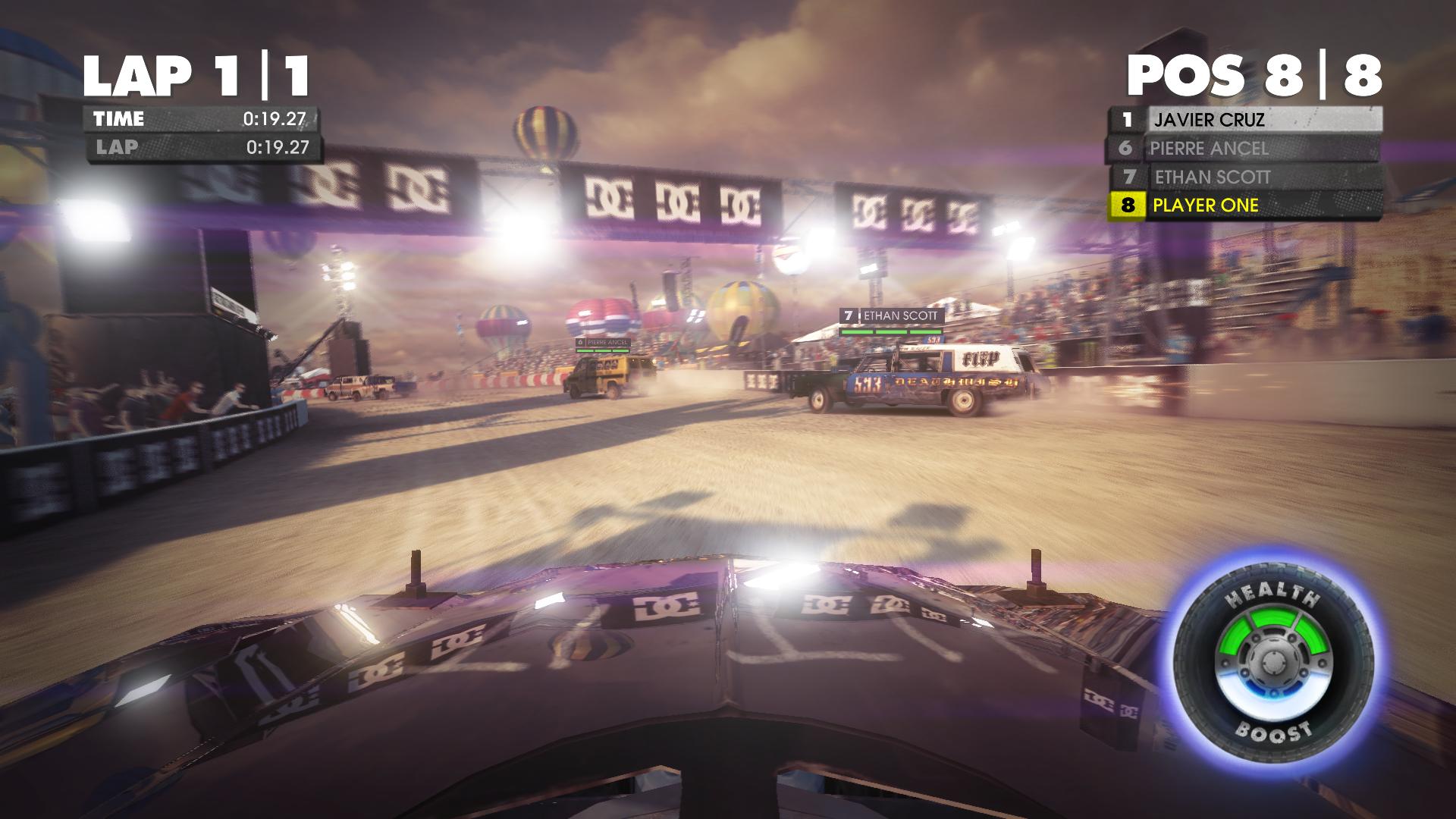Gaming At 1920x1080: AMD's Trinity Takes On Intel HD Graphics
Think you're pretty snazzy because your integrated graphics core plays mainstream games at 1280x720? We're on to bigger and better things, like modern titles at 1920x1080. Can AMD's Trinity architecture push high-enough frame rates to make this possible?
Benchmark Results: DiRT Showdown
For us, DiRT Showdown was one of the most informative tests in this round-up. Three of our four processors were able to play this modern graphics-rich racer at quite playable rates, with even the Core i3-3225 turning in a fair showing with barely perceptible drops.
Moreover, unlike WoW, the difference in detail levels isn’t glaringly obvious. Even on Ultra Low, with everything turned off, DiRT Showdown looks impressively gritty.
In contrast, we also generated benchmark results and screen shots using two more demanding presets. Yes, the higher settings are more impressive, but we didn’t feel much difference between Medium and High.
What sort of impact do these higher settings have on performance? At the Medium preset, both Intel processors become unplayable, and the A8-5600K barely skates by. The A10-5800K still has some headroom left, though its 30 FPS minimum is about as low as we're willing to go.
Although it lies outside the parameters of this article, we will point out that this is the kind of situation where a system memory overclock makes a lot of sense. A quick bump to 1833 MT/s might be all the A8 needs to keep it fully playable. Unlike a hard push to the main processor, a memory overclock can yield an easy 5% to 10% performance boost without an appreciable increase in heat or system noise. If you want evidence, just check out Chris Angelini's early look at Trinity's memory scaling.
Stepping up to High detail settings blows even the A10 out of contention. Worse, Showdown locks up with a black screen on both Intel chips until we kill it with Windows Task Manager. Perhaps we should be impressed that only one of our ten games forced a failure in this processor category, and even then only at our highest settings. Still, it’s hard not to look critically at Intel’s graphics and ask, “Really?”
Get Tom's Hardware's best news and in-depth reviews, straight to your inbox.
Current page: Benchmark Results: DiRT Showdown
Prev Page Benchmark Results: Battlefield 3, Crysis 2, And Witcher 2 Next Page Benchmark Results: Batman: Arkham City-
azathoth Seems like a perfect combination for a Casual PC gamer, I'm just curious as to the price of the Trinity APU's.Reply -
luciferano They both have graphics that have HD in their name, but AMD's HD graphics are more *HD*, lol.Reply -
Nintendo Maniac 64 Err... did we really need both the A10-5800k and the A8-5600k? Seeing how both are already 100w unlocked CPUs, surely something like an A10-5800k vs a 65w A10-5700 would have been more interesting for an HTPC environment...Reply -
mayankleoboy1 Consoles set the bar for game developers. These iGPU's are comparable to the consoles and thats why games will run smooth here.Reply
With next gen consoles coming out next year, game devs will target them. Hence the minimum standard for games will rise, making the next gen games much slower on the iGPU's. So both AMD and Intel will have to increase performance much more in the next 1-2 years.
tl;dr : next gen games will run poorly on these igpu's as next gen consoles will set the minimum performance standard. -
mousseng Reply
Keep in mind, though, that that's exactly what's going to allow AMD and Intel to advance their hardware faster than games will, as they were discussing in the article (first page of the interview). Look how far Fusion and HD Graphics have come over the past 3 years, and look how long the previous console generation lasted - if that trend is anything to go by, I'm sure integrated graphics could easily become a viable budget gaming option in the next few years.9537609 said:tl;dr : next gen games will run poorly on these igpu's as next gen consoles will set the minimum performance standard. -
falchard Since when as AMD or nVidia actually taken on Intel graphics? Thats a bit insulting considering the disproportionate results time and time again.Reply -
luciferano mayankleoboy1Consoles set the bar for game developers. These iGPU's are comparable to the consoles and thats why games will run smooth here.With next gen consoles coming out next year, game devs will target them. Hence the minimum standard for games will rise, making the next gen games much slower on the iGPU's. So both AMD and Intel will have to increase performance much more in the next 1-2 years.tl;dr : next gen games will run poorly on these igpu's as next gen consoles will set the minimum performance standard.Reply
Actually, the A10 and A8 have somewhat superior graphics compared to current consoles. Current consoles can't even play in 720p as well as these AMD IGPs played 1080p despite being a more optimized platform, so that this is true is kinda obvious IMO. Also, new games would simply mean dropping resolution for these APUs. They wouldn't be unable to play new games, just probably at 1080p and 16xx by 900/10xx resolutions too.
Intel probably isn't very motivated by gaming performance for their IGPs and they're supposedly making roughly 100% performance gains per generation with their top-end IGPs anyway, so they're working on growing IGP performance. AMD also gets to use GCN in their next APU and I don't think that I need to explain the implications there, especially if they go the extra mile with using their high-density library tech too.





